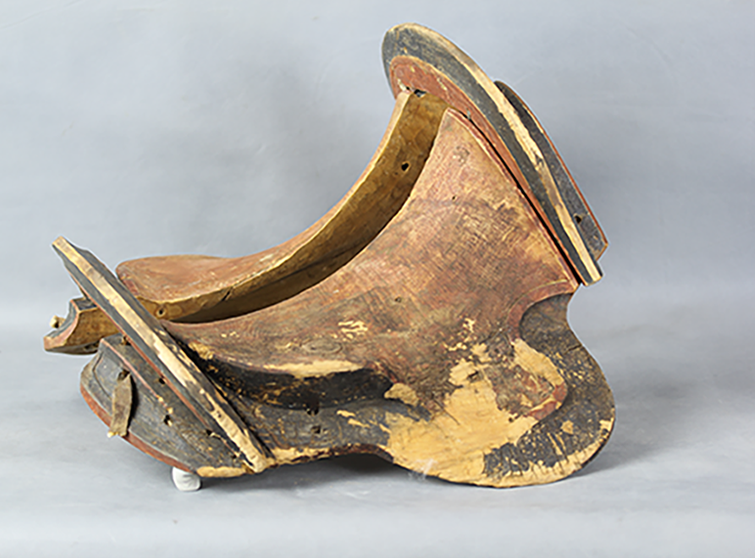Archaeologists recently made a breakthrough involving an incredibly preserved wooden saddle with iron stirrups that was previously looted from the ancient tomb of Urd Ulaan Uneet in Mongolia, providing clues in uncovering the origins of medieval equestrianism and mounted warfare.
In the study, published in the academic journal "Antiquity" last Dec. 8, the international team of researchers said that they employed radiocarbon dating to analyze the age of the painted saddle, placing it between 267 to 535 AD which makes it the oldest known wooden framed saddle in East Asia.

The Development of Equestrian Technology and Its Mystery
Modern horses as we know of today were believed to have been first domesticated around 2000 BC in Western and Central Asia. The general populace of the region utilized this newfound animal labor to support their nomadic lifestyle.
Early equestrians of the time essentially rode their horses bareback and were usually equipped with bows and arrows, which is why they based most of their stability on a leg hooking technique in addition to grabbing the animal's mane.
Progressing through the centuries around 1000 BC, nomads of the Eurasian steppes eventually developed the bridle and bit which allowed them to transition into mounted riding through the utilization of a soft pad.
However, more rigid and structured saddles, which were important for cavalries, are believed to be a recent innovation but archaeologists have routinely failed to find concrete pieces of evidence regarding this technology's origin, with the main issue being that organic material tended to corrode more easily when put within the harsh climate of the steppes.
A 1,600-Year-Old Painted Saddle: Last Piece of the Equestrian 'Puzzle'
In 2015, local police of the Khovd province alerted the National Museum of Mongolia about a looting incident that took place in the ancient burial cave of Urd Ulaan Uneet. Comprising the confiscated artifacts was a birch saddle that was painted with black and red dye, some leather straps, an iron bit, and wooden archery equipment.
In addition to that, the mummified remains of both a domestic horse and a man adorned in animal hides were also recovered, which earned the site the moniker "Cave of the Equestrian." The researchers confirmed the remains were as mentioned by utilizing DNA testing.
Further inspection of the remains of the horse, specifically, revealed signs of challenges that domestication might've brought the animal, as the horse exhibited considerable dental damage and changes to its nasal bones. For this, the researchers deduced the iron bit to be the most likely culprit.
According to the researchers, these findings also point toward the Eastern Steppe as the possible key player when it comes to the "development and spread of the frame saddle and stirrup."
One of the study's authors and archaeologist from the University of Colorado Boulder, William Taylor, told Live Science that the development of "a rigid frame that could support a suspended stirrup was a watershed moment, really unlocking a whole host of other things people could do while mounted."
This idea was echoed in their study as the researchers wrote: "Mongolian steppe cultures were closely tied to key innovations in equestrianism, an advance that had a major impact on the conduct of medieval warfare."